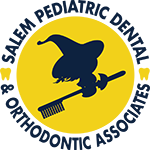
Bye-Bye, Buck Teeth! How to Overcome an Overbite
“Overbite”, “overjet” or simply “buck teeth”– protruding teeth can go by many names, but “pretty” isn’t one of them. And they aren’t comfortable either; upper teeth that extend well past the lower teeth can often make it difficult to close the mouth, chew or speak easily.
It’s a common condition, but not one that people have to live with. In fact, there are just as many corrective methods for this dental problem as the names it has been given! If you (or a loved one) has buck teeth, get an in-depth look at what may have caused it and what you can do to prevent it from becoming a lifelong burden on your looks, oral health and self-esteem.
Causes of Buck Teeth
Buck teeth can easily be identified at a very early age, and can be due to a variety of factors including:
- Genes: a person can inherit the problem if born with naturally uneven jaws
- Habits: teeth can jut out after constant pacifier/thumb sucking or tongue thrusting
- Crowded teeth: crookedness, facial injury and/or tooth abnormalities can play a role
The severity of the condition can vary from mild to extreme, and may gradually become worse over time if left untreated.
Treatment Options
Age and the depth of a patient’s overbite are two primary factors that can dictate the type of treatment an orthodontist chooses to correct the problem. New techniques are always being explored, but here are a few of the most common recommendations:
- Braces
Whether metal, ceramic or clear, it’s a popular route many orthodontists take to fix protruding teeth. Teeth that are jutting out are straightened and forced closer in alignment with the lower jaw by tightening the braces over time. - Aligners
In mild cases of protruding teeth, clear, removable aligners may be a more comfortable and convenient option. Aligners use less force (and thus result in less pain) than braces and can be removed for added ease when brushing or flossing. - Surgery
Extreme cases in which the overbite is due to skeletal/jaw structure may require surgery. Patients who fall into this category are referred to an oral maxillofacial surgeon, and surgery usually involves pushing the maxilla bones (which form the upper jaw) behind, or moving the mandible (lower jaw) forward.
Surgery aside, the length of time it takes to achieve results is largely due to when the problem is treated. Younger patients whose jaws are still developing typically require less time to correct an overbite compared to adults whose jaws are not as malleable.
Benefits of Treatment
Even the mildest cases of overbite can reap significant benefits from professional treatment. Perhaps the most noticeable improvement is cosmetic in nature. Once treatment is complete, any bulging around the mouth disappears and patients may experience less strain in their facial muscles.
Being able to open and close the mouth more easily can also vastly improve speech, especially for those who adopted a slur or lisp due to an overbite. And last but not least, better alignment of the teeth can have a profound effect on oral health, making it easier to clean the teeth and minimize the risk of jaw-related disorders such as TMJ.
If you’ve been battling a case of buck teeth, get it fixed for good by finding an orthodontist near you.
Sources:
Beercroft, Matt. (2014, June 5). Overbite: Causes & Treatments. Retrieved June 17, 2015, from http://www.beecroftortho.com/2014/06/overbite-causes-treatments/
Orthodontic Disorders (2012). Retrieved June 17, 2015, from http://dentaloptionspa.com/orthodontic-disorders-aventura-fl.html
Share
SEP
2022


About the Author:
Since 1972, Salem Pediatric Dental & Orthodontic Associates has provided comprehensive preventive and therapeutic oral health care for infants and children through adolescence including those with special health care needs. We proudly serve the communities of Salem, Lynn, Peabody, Danvers, Marblehead, Swampscott, Beverly, and many more.